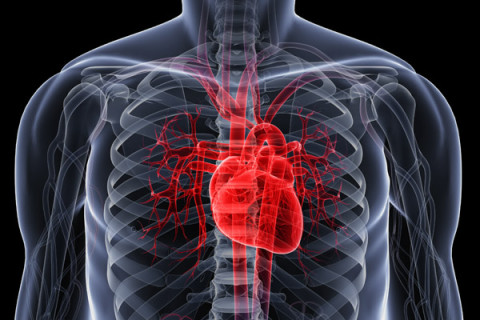
http://www.telegraph.co.uk/health/healthnews/10260701/Heart-attack-damage-repaired-using-gene-therapy.html
8:31PM BST 22 Aug 2013
"Heart attack damage repaired using gene therapy
Scarred heart tissue can be transformed into beating cells using a cocktail of five genes, according to a new study.
Heart attacks cause cells in the affected area to stop beating and become encased in scar tissue, but researchers believe the damage may not be permanent.
Using a combination of genes they were able to coax the scar-forming cells into a state which closely resembles healthy, beating heart cells, suggesting the condition is reversible.
The scientists, from the Gladstone Institutes in America, had already demonstrated their technique on mice but have taken a step further by doing the same to human heart cells in a laboratory.
The study is a "proof of concept" that the scar-forming cells, known as fibroblasts, "can be reprogrammed successfully into beating heart cells," and mend the heart from within, they said.
Dr Deepak Srivastava, who led the study, explained: "Fibroblasts make up about 50 per cent of all cells in the heart and therefore make up a vast pool of cells that could one day be harnessed and reprogrammed to create new muscle."We've now laid a solid foundation for developing a way to reverse the damage – something previously thought impossible – and changing the way that doctors may treat heart attacks in the future."
The researchers reported last year that by injecting three genes, known as GMT, into the hearts of live mice, they could turn the scar-forming fibroblasts into beating heart cells.
The new heart muscle cells beat in time with neighbouring cells and improved the heart's ability to pump blood around the animals' bodies.
Attempts to replicate the findings in human heart tissue initially failed, but by adding a further two genes to the mix the team was able to achieve similar results.
Dr Ji-dong Fu, one of the authors of the study, which was published in the Stem Cell Reports journal, said: "While almost all the cells in our study exhibited at least a partial transformation, about 20 per cent of them were capable of transmitting electrical signals — a key feature of beating heart cells.
"Success rates might be improved by transforming the fibroblasts within living hearts rather than in a dish – something we also observed during our initial experiments in mice."
The researchers intend to test the five-gene mixture in larger live mammals, such as pigs, and eventually to develop a combination of drug-like chemicals which could achieve the same effect but would be safer and easier to administer.
Figures released by the British Heart Foundation last year revealed that the number of patients who are surviving heart attacks has increased dramatically over the past decade.
Some 70 per cent of women and 68 per cent of men in England now live through the ordeal, compared with just a third of all cases in the 1970s.
However, about 750,000 people in the UK are now living with heart failure, a condition where the heart muscle is so damaged by a severe heart attack that it cannot function properly, which kills three quarters of patients within five years.
Professor Jeremy Pearson, Associate Medical Director at the British Heart Foundation, said: “This research represents a small but significant step forward. Last year these scientists had a real breakthrough when they turned fibroblasts - the cells that form scarred heart tissue - in the hearts of mice into beating heart cells, by injecting them with a ‘cocktail’ of different genes.
“Now, using a different combination of genes, they have managed to turn human fibroblasts into beating heart cells in a culture dish. This process is still a long way from the clinic, but advances like this bring us closer to the likelihood that we could one day use these techniques to mend human hearts.”"